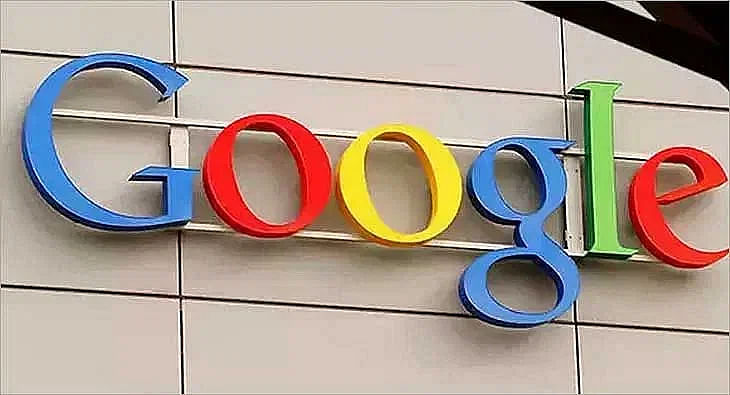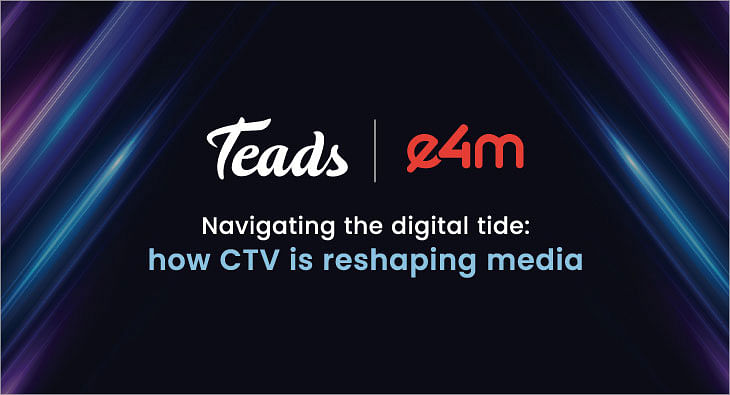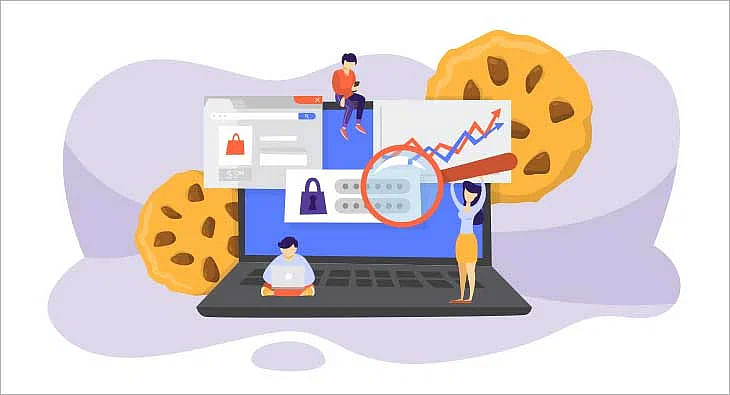The Huffington Post and Times of India Launch "HuffPost India"
GroupM India will be strategic partner for brand synergies and advertising in the country

The Huffington Post Media Group and The Times of India Group have announced the official launch of an Indian edition of The Huffington Post, a leading global source of breaking news, opinion, entertainment, and community. GroupM also comes on board as a strategic partner for brand synergies and advertising in India for the Huffington Post.
HuffPost India will combine The Huffington Post's award-winning news and blogging platform with the local expertise and reach of The Times of India Group. The announcement was jointly made today by Arianna Huffington, President and Editor-in-Chief of The Huffington Post Media Group, and Satyan Gajwani, CEO of Times Internet (TIL), the digital arm of The Times of India, with advertising partner CVL Srinivas, CEO, GroupM South Asia.
“I’m delighted to launch HuffPost India, which will be our 13th edition since we began our international expansion three years ago,” said Huffington. “The launch comes at a moment when India is facing huge and unique challenges, but also when India’s spiritual traditions have taken their place at the center of a global conversation about what it means to live a good life. It’s in looking back to these ancient traditions and tools that so much of the wisdom and strength needed to build the future will be found. I’m thrilled that HuffPost India will be there to chronicle this story and – just as important – help Indians tell their stories themselves.”
Speaking on the occasion, Gajwani said - "We are very excited to launch Huffington Post India. Huffington Post is the first real digital-first news success story globally, and their impact is seen across the world. They've coupled a best-in-class technology platform with a fresh way of approaching the world's issues today. They have been a pioneer in doing a great mix of contemporary news coverage alongside great lifestyle, health and positive uplifting content. We look forward to bringing HuffPo’s conversational approach to news to a large section of Indian audience."
Commenting on the partnership with Huffington Post, Mr. CVL Srinivas¸CEO, GroupM South Asia said "GroupM has been at the forefront of driving digital media innovations. Our strategic partnership with Huffington Post in India is another step in that direction. While advertising on digital has been growing at a healthy pace we believe brands are yet to harness the full potential of digital media. With an iconic player like Huffington Post, brands have a great opportunity to connect with their audiences. We will be working together to create these opportunities and are very excited about this partnership."
"As the world's largest democracy, and with a middle class of more than 250 million people, India is a critical destination for any global media company," said Huffington Post Media Group CEO Jimmy Maymann. "And with Indian household consumption predicted to continue to grow nearly 20% per year, this partnership gives us an ideal entry into what is expected to become the world's fifth-largest consumer market within the next ten years."
The Huffington Post and The Times of India Group have established an editorial team based in New Delhi. The English-language website will cover everything from politics, media and entertainment to technology, religion and lifestyle, and open up The Huffington Post’s blogging platform to anyone in the country with a story to tell.
Read more news about Digital Media, Internet Advertising, Marketing News, Television Media, Radio Media
For more updates, be socially connected with us onInstagram, LinkedIn, Twitter, Facebook, Youtube, Whatsapp & Google News
JioCinema launches ad-free subscription service starting at Rs 29
Family plan is available at Rs 89/month for up to any 4 devices. Sports content including the ongoing IPL will continue to be available for free
JioCinema has announced its new subscription offering, ‘JioCinema Premium’. The new plans, starting at Rs.29/month, will offer an ad-free experience delivered in up to 4K quality and off-line viewing options. Members can access Exclusive Series, Movies, Hollywood, Kids & TV entertainment, on any device, including Connected TVs, JioCinema stated in a release.
With a focus on multi-segment consumption across Indian households, a ‘Family’ plan was also announced at Rs.89/month which offers the additional benefit of 4 simultaneous screens access. Existing JioCinema Premium members will now enjoy all the additional benefits of the ‘Family’ plan at no extra cost.
Sports content including the ongoing Indian Premier League will continue to be available for Free as part of its Ad-Supported offering.
Speaking on the launch of JioCinema Premium, Kiran Mani, CEO, Viacom18 Digital said, “Creating and building an entertainment ecosystem with a product that is made for every Indian household, is not just a business strategy, but a vision to empower our country and users with an unmatched entertainment experience. JioCinema Premium aims to redefine the narrative of premium entertainment for every Indian while building a daily viewing habit.”
He further added, “The introduction of JioCinema Premium breaks the numerous cost and quality barriers that exist in accessing premium entertainment. With 4K streaming, best-in-class audio, offline viewing and no device restriction all at a customer-centric pricing is sure to democratise access to quality entertainment for all of India.”
JioCinema has also rolled out a high-decibel & much-appreciated campaign asking consumers, “Toh Aaj Kya Plan Hai?”. The campaign highlights the core benefits of JioCinema Premium while sarcastically showcasing the distress of today’s consumers when choosing their entertainment plan.
Meta posts 27% jump in Q1 revenue
Meta’s advertising revenue for the quarter stood at $35,635 million as compared to $28,101 million the same quarter last year
Meta Platforms has reported financial results for the quarter ended March 31, 2024.
The platform has posted total revenue of $36.46 billion, a 27% increase from last year.
The advertising revenue for the quarter ended March 31 stood at $35,635 million as compared to $28,101 million the same quarter last year.
Ad impressions delivered across Meta’s family of apps have increased by 20% year-over-year, the tech giant said. The average price per ad has also increased by 6% year-over-year.
Total costs and expenses stands at $22.64 billion, an increase of 6% year-over-year, while capital expenditures, including principal payments on finance leases, were $6.72 billion.
"It's been a good start to the year," said Mark Zuckerberg, Meta founder and CEO. "The new version of Meta AI with Llama 3 is another step towards building the world's leading AI. We're seeing healthy growth across our apps and we continue making steady progress building the metaverse as well.”
Cookie still here: Where are marketers headed?
Delay of cookie phase-out isn't just a postponement, but a wake-up call. It underscores need for an ecosystem that prioritises user privacy while delivering effective advertising, say experts
While the ‘what’ of Google delaying cookie deprecation has been largely addressed by now, it is about time to bring up who stands to get most affected out of the many players in this game. For instance, since the cookie deprecation announcement first happened in 2020, publishers, vendors and advertisers are all geared up to ace their first-party data game. Heavy investments went into building first party data stacks and tools.
Advertisers (even legacy brands) shifted their businesses largely to D2C channels in order to get first-party consumer data. exchange4media had previously reported how FMCG led the investments, as ‘cookie crumble’ picked pace earlier this year. Rajiv Dingra, Founder & CEO of ReBid, had shared that the agency had been approached by FMCG players for a plan to collect approximately 30 million first-party data in the next two years. “They are willing to spend for the same,” he had added.
Cut to April 2024
Given the immense numbers of stakeholders involved, from Google to publishers to advertisers to the users themselves (whom these changes are actually meant for), there is clearly a need to appeal to the biggest kid on the playground. And above Google are only policymakers, (sorry gods).
According to a digital expert’s LinkedIn post (following the delay announcement), the number of startups that launched alternative solutions to capture and carry consent in an independent manner since 2019 have all burned their cash and have either been shut down or bought over by legacy companies.
Furthermore, noting that the US, EU, and Australia are the biggest arbiters of industry practices in their (and the larger world's) geographies, Preetham Venkky, CDO at DDB Mudra says, for Google, it's all about getting that consensus.
“This move to PSB (Privacy Sandbox) isn't just one step ahead of third-party cookies; it's about 10 steps ahead. It's only natural then for Google to seek the broadest possible consensus for these changes that they are looking to implement. Once these particular policymakers express their satisfaction with and ratify the PSB practices that Google looks to bring about, the company will feel much more confident about rolling them out globally.”
What happened
The so-called ‘demise’ of third-party cookies hits the different segments of the digital advertising landscape, in very different ways. Russhabh R Thakkar, Founder and CEO of Frodoh World agrees.
According to him, the demise of third-party cookies threw a wrench into the well-oiled machine of digital advertising. “While everyone felt the pinch, the pain points differed,” he says.
Experts say that for publishers, the challenge still lies in transitioning from a third-party data crutch to a first-party data cane.
Thakkar adds that building robust in-house data collection requires investment and strategic planning, but ultimately fosters a deeper understanding of their audience and potentially higher ad value in the long run. “CTV platforms, for example, had a headstart here, as they often collect valuable viewing data that can be leveraged for more effective ad targeting.”
Vendors, on the other hand, faced and are still facing a more fundamental shift. Their entire ad-tech infrastructure was built on cookies. Now, they're scrambling to develop and gain industry-wide adoption for entirely new solutions like contextual targeting and privacy-preserving identity models.
“Advertisers, used to the laser focus of cookie-based targeting, now grapple with broader contextual targeting and a more probabilistic approach to campaign measurement. However, this can be an opportunity to invest in building direct relationships with publishers, fostering long-term brand loyalty,” Thakkar further explained.
Beyond Borders
For Venkky, it's now about bringing about change at international policy level, in order to bring about change to your desktop browsing.
“The delay isn't just a postponement; it's a wake-up call. It underscores the need for a future-proof ecosystem that prioritises user privacy while delivering effective advertising. The most adaptable players, those who cannot only weather the short-term disruption but also leverage this as a catalyst for innovation, will be the ones who thrive in the post-cookie era,” says Thakkar.
A digital expert from a leading agency shared on his LinkedIn post, “The cookie-less future isn't the whole story, it's just one part of where we're headed in a privacy-first world. Effective advertising is powered by a wide variety of signals, not just cookies.”
An industry source had told exchange4media earlier that some tests that were run in Europe for Privacy Sandbox, didn’t yield very favourable outcomes. “The campaigns that were run using Privacy Sandbox APIs had lower click through rates and the conversion rate per dollar were one to three percent lesser for the test group, as compared to if they did the same thing using third party cookies,” the source had added.
Back to the future?
As of 4th January 2024, Chrome had started restricting third-party cookies by default for 1% of Chrome browsers. “It may take several days to reach the full 1%,” Google had noted in its announcement. It is the end of April and according to experts, it still hasn’t reached that 1% mark.
All of these facts beg one question – how serious is the hype around third-party cookie deprecation? We’ll hold that thought for now.
Industry will get time to adapt to cookie deprecation: Experts on phase-out delay
Industry players say the delay will give Google more time to address concerns surrounding its proposed solutions
It wasn’t that much of a surprise, but the news that Google has (yet again) delayed the deprecation of third-party cookies is already doing the rounds in any business even vaguely related to digital media. The much-vaunted rollout of its Privacy Sandbox as a viable alternative to cookies has also been impacted in a move that had been long predicted by industry watchers, given the absence of an all-encompassing ecosystem to take the place of said cookies.
Gopa Menon, Head of Digital for South Asia at Mindshare, believes this gives the industry more time to adjust and allows Google to address concerns surrounding its proposed solutions. He identified several issues that still needed addressing, which this delay will now allow.
“The industry needs time as marketers and advertisers need time to adapt to new tracking methods, and privacy concerns. Proposed alternatives raise questions about user privacy and potential advantages for Google,” he said.
This is the third time that Google has pushed back the final crumble of the cookie, originally scheduled for 2020. The pandemic didn’t help, but since then, nor has the lack of a fully viable alternative to the ubiquity of the cookie, so precious to advertisers and marketers.
In a blog post on Privacy Sandbox, Google wrote, “We recognize that there are ongoing challenges related to reconciling divergent feedback from the industry, regulators and developers, and will continue to engage closely with the entire ecosystem. It's also critical that the CMA has sufficient time to review all evidence including results from industry tests, which the CMA has asked market participants to provide by the end of June. Given both of these significant considerations, we will not complete third-party cookie deprecation during the second half of Q4.”
Sajal Gupta, Chief Executive for Kiaos Marketing Pvt Ltd, also points out that UK’s competition controller, Competition and Markets Authority (CMA) made some observations on the tests on Google’s cookie-less solution called Privacy Sandbox. This move comes even as Google is set to declare its earnings for the previous quarter.
While Google may continue to benefit from user activity data while limiting competitors’ access to the same data, Google’s ability to control the inclusion of ad tech rivals on this list could advantage its ad tech services. Publishers and advertisers may be less able to effectively identify fraudulent activity.
According to Gupta, “More intensive work needs to go in by the team in Google to solve CMA’s concerns. The regulators got involved when there were observations of user privacy being compromised, this is getting addressed partially and gaps remain. Publishers and advertisers are concerned about measurement which will be broken in the cookie-less world, platforms and AdTech players have a roadmap yet.”
Agreeing that the development was unsurprising, Abhinay Bhasin, Head of Product Marketing for Profitwheel, added, “The main roadblocks I’d assume is reconciling feedback from the multiple stakeholders involved and keeping in line with the overall vision of the endeavour - to safeguard consumer privacy.”
Meanwhile, never one to lose hope, Google added in its statement, “We remain committed to engaging closely with the CMA and ICO and we hope to conclude that process this year. Assuming we can reach an agreement, we envision proceeding with third-party cookie deprecation starting early next year.”
Google delays cookie phase-out again
'We will not complete third-party cookie deprecation during the second half of Q4,' said the tech giant in a blog post on Tuesday
Tech giant Google has announced that there will be a delay in phasing out third-party cookies. "We are providing an update on the plan for third-party cookie deprecation on Chrome," said Google in a post on Privacy Sandbox News.
The announcement was made on Tuesday, April 23, ahead of the quarterly reports from Google and the UK's Competition and Markets Authority (CMA).
Google cited challenges in the ad market in the absence of cookies and CMA's need for time to review results from industry tests as the reasons for the delay.
"We recognize that there are ongoing challenges related to reconciling divergent feedback from the industry, regulators and developers, and will continue to engage closely with the entire ecosystem.
"It's also critical that the CMA has sufficient time to review all evidence including results from industry tests, which the CMA has asked market participants to provide by the end of June. Given both of these significant considerations, we will not complete third-party cookie deprecation during the second half of Q4," it said.
The tech giant also upheld its commitment to engaging closely with the CMA and ICO and closing the process this year. Google also said that it envisions proceeding with the cookie deprecation starting early next year.
This is the third time that Google has delayed third-party cookie deprecation. The original deadline for the phase-out was January 2020.
Google repeatedly stated its intention to phase out cookies in Chrome by the end of 2024 and was actively developing alternative solutions like Privacy Sandbox to provide for targeted advertising and audience measurement.
Google had previously committed to a firm timeline in 2023 with a phased approach supposed to start with 1% deprecation in January 2024 gradually increasing until eliminating 100% of third-party cookies in the second half of 2024.
Virtual Influencers: Advertisers’ dream or creators’ nightmare?
Experts say there’s plenty of space to grow and they see VIs and real influencers coexisting and complementing each other in the future
From having entered the advertiser’s lexicon as a buzz word a couple of years ago, influencer marketing is increasingly becoming a big-ticket item on a brand’s ad spend plans. According to the latest 'State of influencer marketing in India' report by EY, influencer marketing is set to surge by 25% in 2024, reaching Rs 2,344 crore and projected to hit Rs 3,375 crore by 2026.
As Generation Z and Generation Alpha come to the forefront and change consumption patterns and habits, and look beyond the limelight traditionally hogged by celebrities like actors, athletes, and musicians, this cavalcade of content creators are challenging the status quo, and commanding the same kind of paychecks. But, like with everyone else, even their jobs aren’t immune, thanks, naturally, to AI.
Lil Miquela, a virtual influencer with over 3 million Instagram followers, has successfully partnered with major brands like Samsung and Calvin Klein. Her ability to connect with a younger demographic in a relatable yet aspirational way is a testament to the power of VIs.
Venugopal Ganganna, CEO, Langoor Digital, agrees that one trend that's captured his attention – and the attention of marketers worldwide – is the rise of virtual influencers (VIs). “These computer-generated personalities are not just a fad; they represent a significant shift in how brands connect with consumers.”
Advantage AI
The collaboration between virtual influencer Lil Miquela and BMW serves as a compelling indication that the trend towards virtual endorsements is gaining momentum
John Paite, chief creative officer, India, Media.Monks points out that virtual influencers could serve as lifelong brand ambassadors without the need for pay or discipline, offering brands remarkable efficiency across the board.
“While the initial setup and production costs can be steep, the long-term benefits promise significant returns on investment. As AI technology advances and tools for creating virtual influencers, digital avatars and AI characters improve, their development is expected to become quicker and simpler. Given these trends, it's likely that more brands will adopt this model in the coming years,” says Paite.
Indeed, a 2022 consumer survey by the Influencer Marketing Factory revealed that 58% of respondents follow at least one VI. Furthermore, 35% of consumers have purchased products recommended by VIs, demonstrating their potential to drive sales.
In India, boAt, Titan Eye & Realme have already collaborated with Indian virtual influencer Kyra. “While the flare of AI and the curiosity of the audience are primary reasons for the brands to adapt at this moment, there is potential for virtual influencer creation and management to grow into a market itself,” says Sajeesh Radhakrishnan, Revenue Director - SME & Startups, HiveMinds.
“For one of our QSR clients, 16-18 % of all digital (performance marketing) orders came through influencers. In another client from the insurance sector, we see a conversion of 1.6X higher for influencer-led ad assets. The ease of creating virtual assets will definitely boost brands to adapt virtual influencer strategy to every part of digital channels,” he adds.
Virtual vs Reality?
However, Karan Pherwani, Vice President, Chtrbox says that while it is convenient for brands to have an individual face of the brand in terms of availability and delivery of the brand message, it lacks the authenticity and credibility that the content creator brings to the table. “While AI influencers can flawlessly execute a brand's vision, fostering a genuine connection with the audience, which ultimately drives business growth, often relies on the creator's unique perspective and their leading execution for the brands.”
“What makes influencers desirable is their unique style, be it their regional accent, familiar setup or the topics they are passionate about. Almost all good influencers keep things real and add their signature to any brand message they deliver. They don’t use brand ad assets but co-create ad assets with brands. There is trust and familiarity between an influencer and their followers,” agrees Radhakrishnan.
And given the burgeoning of the influencer economy, experts agree that there’s plenty of space to grow, with brands going into a future happy in the knowledge that they have plenty of options, both real and virtual. And as alongside its real-life counterparts, AI technology continues to evolve, so will the capabilities of VIs, from VIs interacting with customers in real-time, to personalizing the shopping experience or offering product tutorials.
“Instead of a zero-sum game, I see VIs and real influencers coexisting and complementing each other. Brands can leverage VIs for targeted campaigns and precise messaging, while partnering with real influencers for broader brand awareness and a touch of human connection,” says Ganganna. Imagine a scenario where a VI spearheads a product launch, generating initial excitement, while a real influencer then reviews the product, offering an authentic user experience. This combined approach can be incredibly effective.
“In summary, virtual influencers are becoming popular because they're easy to manage and cost-effective. However, this trend also allows human influencers to stand out by highlighting their unique human traits. As the industry evolves, human and virtual influencers must find new ways to work together and enhance the overall marketing landscape,” says Paite.
Sociapa gets digital mandate for Tennishub
'Truly elated to join hands with Tennishub,' said Sociapa about its newly forged association
Sociapa has bagged the digital mandate for Tennishub, an online Tennis store.
Founder of Sociapa, Dheeraj Raj, expressed his profound excitement about the partnership with Tennishub, a pioneering name in the realm of online tennis stores. He said, "We are truly elated to join hands with Tennishub, a brand that exemplifies excellence in its field." He added, "The prospect of embarking on this journey with Tennishub fills me with immense happiness and optimism”.
In response to the announcement, Ronak Sachdeva, Founder, Tennishub said, “We are equally thrilled to partner with Sociapa, recognizing the agency's expertise and innovative strategies in the digital marketing landscape”.











 Share
Share






